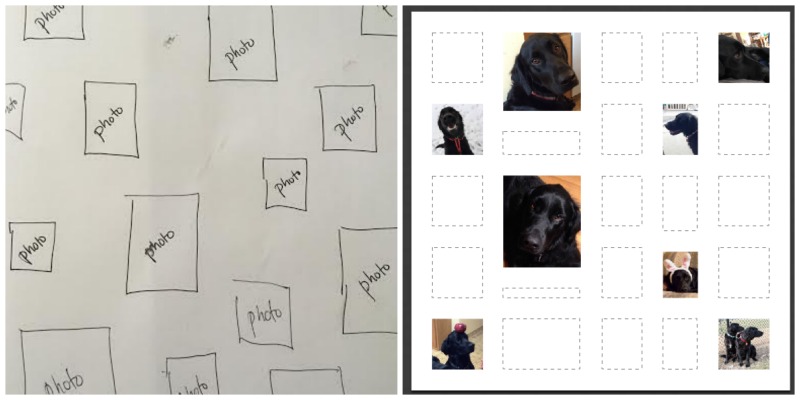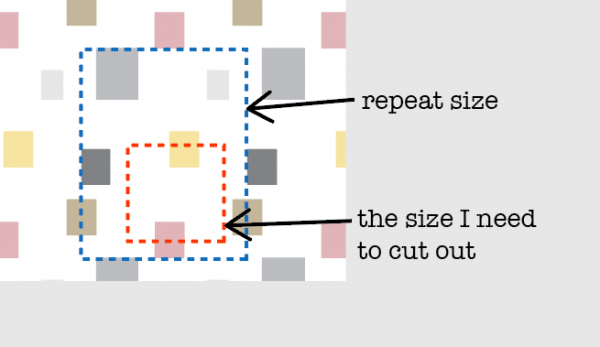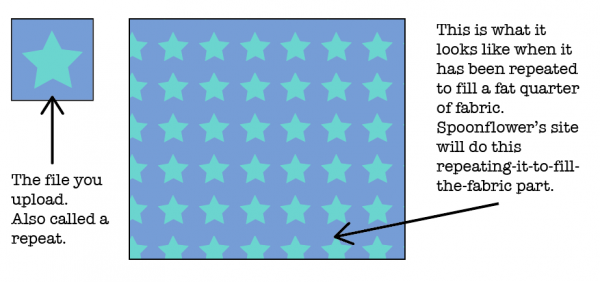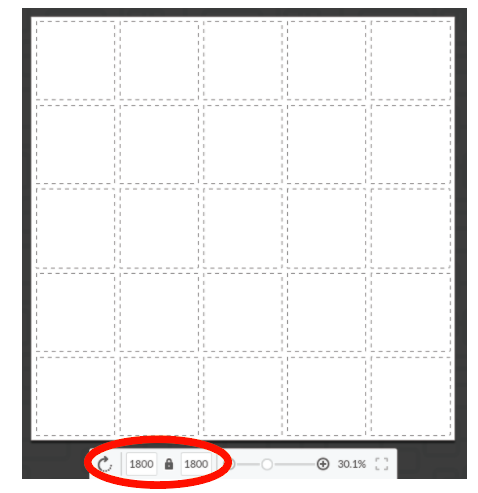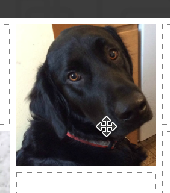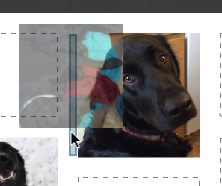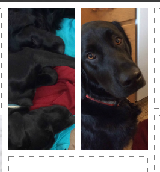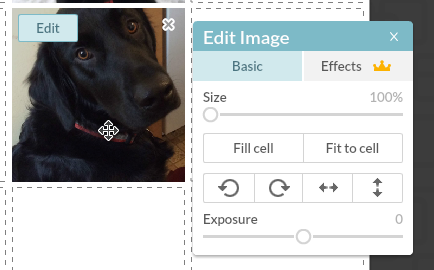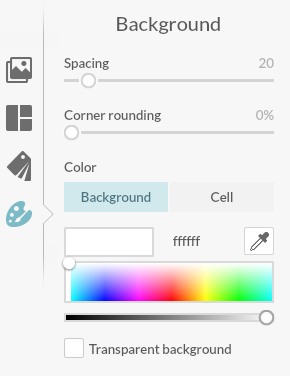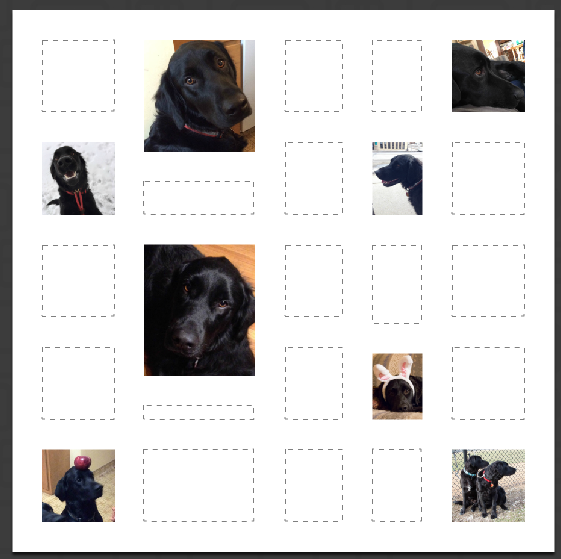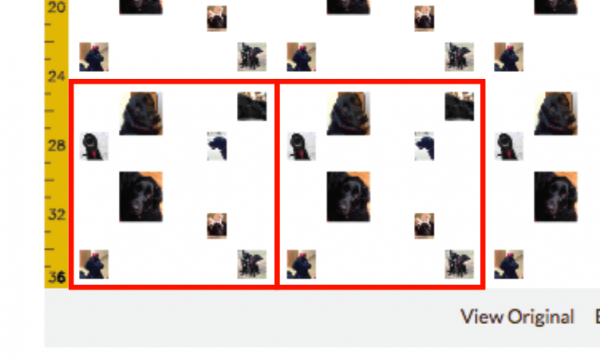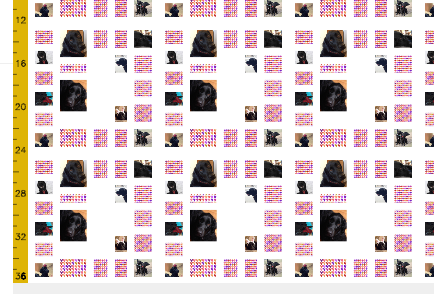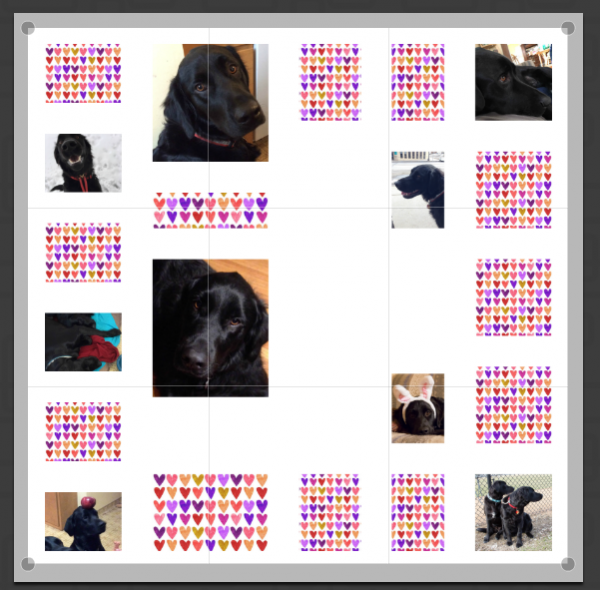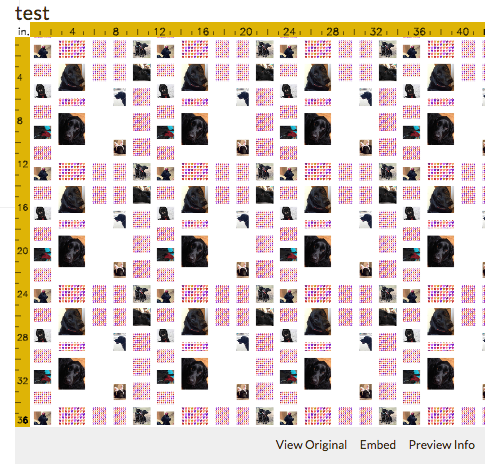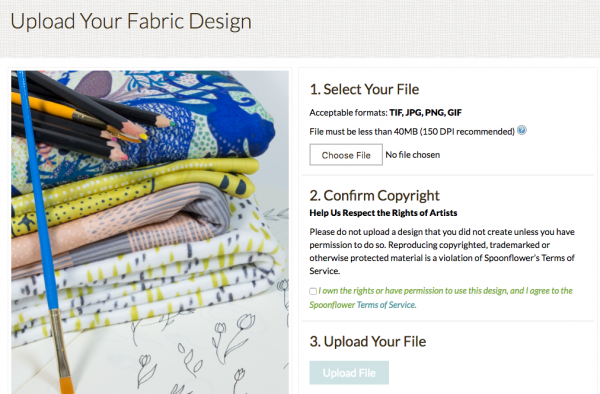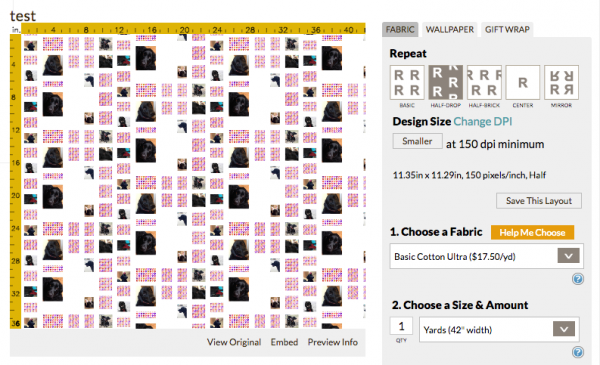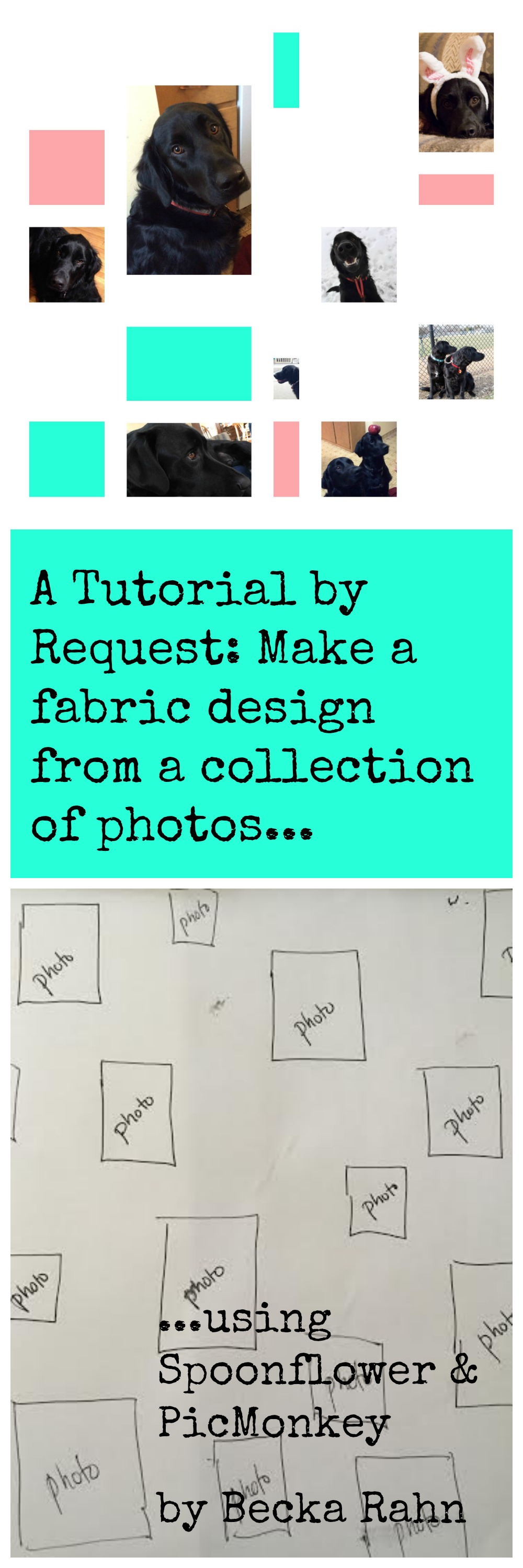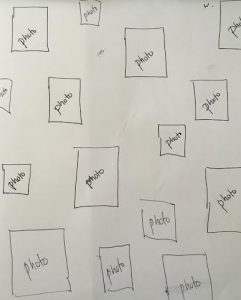 I am going to call this tutorial the first in what I hope will be a series of “Suggestion Box Tutorials“.
I am going to call this tutorial the first in what I hope will be a series of “Suggestion Box Tutorials“.
I got an email from a woman this morning asking for help designing a fabric to make a keepsake zipper bag. She and a collection of friends are meeting up this summer and she wanted a little something to give each of them to commemorate the occasion. She had a great idea for what she wanted the fabric to look like: a collection of photos and little graphics that were all significant to this group of friends. The photos should be scattered like postage stamps on a white background. She even sent me a sketch.
Her question was: did I know of anywhere there was a tutorial that could show her how to do this and how could she make sure that it was just the scale and size she wanted?
Could I think of anything? No. So, this seemed like the perfect tutorial for me to write.
What does your intention tell you about your design?
If you have had the chance to take a class from me, you know that one of my tips for creating really successful fabric designs is to design with intention. The intended use for your fabric can give you so many hints about how you need to set up your design files.
This fabric is intended to be a lining for a small zipper bag. So we know that will use pieces of fabric that are maybe 10-12″ square. If I create a repeating tile that is larger than 12″, I won’t see all of the photos that will be in the design because I will be just cutting out a piece. Maybe that’s ok. Or maybe you want to make sure that each bag has every photo visible. That’s a choice for you to make.
I also know that if my zipper bag is 10-12 inches, I probably need the photos to be pretty small in relation to that so that the scale makes sense. If the photos are each 6 inches, I will only be able to see a couple of them once I cut it out.
Do the math.
So for this project, I am going to use that information to set up my design file (aka do the math). Why do I need to do that now? Can’t I just do the fun part (designing it) and worry about that math stuff later?
The number one thing I hear from new fabric designers is:
I uploaded my thing to Spoonflower and it was so awesome, but it was totally the wrong size! I thought it would be small but when I uploaded it, it was huge! I don’t know what happened. I was so surprised.
This is the step where you can make it turn out exactly the size you want it to be. It just involves a tiny bit of math.
- Decide what size you want your repeat to be. By “repeat” I mean the file that you will upload to Spoonflower. Spoonflower computers will repeat that file it to fill as much fabric as you want to print. Yes, you repeat your repeat. English is weird.
I decided that for this zipper bag lining, I want my repeat to be 12″ because I want to be able to see the whole thing with all of the little photos when I cut out my lining piece. That’s my design choice. You make your choice.
2. The magic number is 150.
The only thing you need to remember about resolution for this project is 150. Resolution is the number of dots (or pixels) per inch that the file needs in order to print at the size you want. Dots per inch = DPI.
Spoonflower’s printers use a resolution of 150 DPI. That’s why 150 is our magic number. That means if you set your file to 150 DPI, you will get exactly what you expect to get. That’s a rule. 150 uploaded = 150 printed. In otherwords, if I make a file that is 12 inches at 150DPI, I will get a printed design that is 12 inches. No more, no less. So how do I set up the file?
3. Figure out how many pixels that is.
Resolution is the number of pixels per inch. Since we know how many inches we need (12″) and we know how many pixels per inch (150 DPI) we can figure out how many total pixels that is. And we need to know the total number of pixels because that’s the number our graphics program will ask for.
inches x resolution = pixels
12 inches x 150 pixels per inch = 1800 pixels
That means if I want a file that will print exactly 12 inches wide, I need to make a file in my graphics program that is 1800 pixels wide.
Remember that number. 1800 pixels. Write it down on a scrap of paper.
Create a new blank file.
For this design, I am going to use a program called PicMonkey because I think it is the ideal tool for this design. It’s going to make it easy. You can use any program you want to to make your designs, but PicMonkey has some built in tools that I know will work really well for this. That’s why I picked it. It’s a free online graphics software that works right in your web browser. You don’t need to download anything.
Go to PicMonkey.com. At the top of the screen you will see a menu bar.
Click on the option on the right that says Collage.
Set up the Layout.
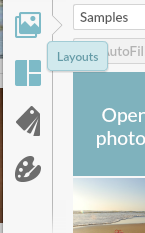
Feel free to explore the options in this panel! These are all of the different ways that PicMonkey can layout a collage for you.
(There are some options that are marked with a crown – those are part of the upgraded “Royale” package that PicMonkey offers, which is an annual fee of $40/year. We will use a free layout option for this project but that $40 per year membership is totally worth it. Note: I don’t get anything from PicMonkey for telling you that; it’s just my personal opinion. I just love PicMonkey.)
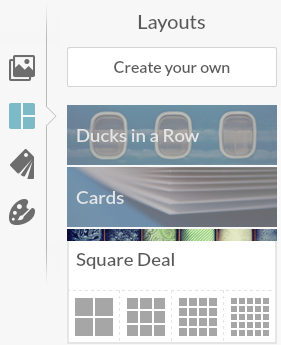 Click on the option called “Square Deal” out of that list and then pick the little icon at the very far right (a grid of 25 squares.)
Click on the option called “Square Deal” out of that list and then pick the little icon at the very far right (a grid of 25 squares.)
Remember when I told you to write down “1800 pixels”. The very next thing you want to do is set this file to be 1800 pixels. Look at the bottom center of the screen and you will see where to type that in. I put in 1800 for both the width and the height, so I will have a 12 x 12 inch square as my file size. (See how easy that was!) Hint, if you click the Lock Icon after you do this, it will keep it at this size while you are doing the next steps and rearranging things.
Add your photos.
The dotted lines in this layout represent the places I can drop in my photos and graphics to make up this design. But first I need to load them into Picmonkey.

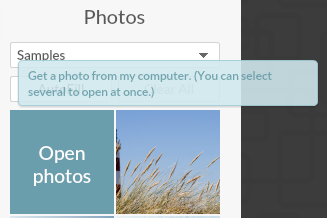
A hint: It’s super helpful if you collect everything you want to use for this design and put it all together in a folder on your Desktop (or somewhere else handy). Then you can select and upload them all at once instead of needing to hunt and peck all over your computer to find what you need. Load all of the photos you want to use right now. You can click that “Open Photos” button more than once to keep adding photos.
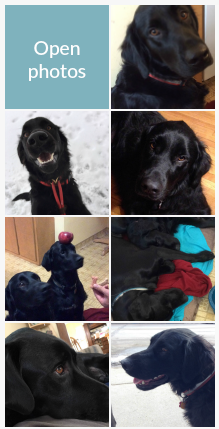 You will see all of your photos pop up in the thumbnails along the left side of the screen. They don’t have to be photos. Anything in a .jpg format will work, like little graphics or screenshots. Just make sure you have permission to use them.
You will see all of your photos pop up in the thumbnails along the left side of the screen. They don’t have to be photos. Anything in a .jpg format will work, like little graphics or screenshots. Just make sure you have permission to use them.
Now the photos are ready to use. I chose a bunch of photos of my dogs for this example.
Fill in the blanks.
You can now click and drag the photos from the left sidebar and drop them in the boxes in the template on the right. If I look back to the sketch my friend made, she has photos scattered all around the design, so I am not going to fill in every box in the template, but I will leave some spaces.
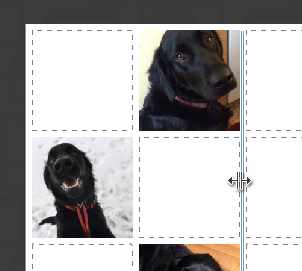 Want to vary the sizes of the boxes a little? You can click and drag to change the size and shape of the rows and columns. Hover with your mouse between a couple of boxes and you will see a double arrow pop up. You can drag with that double arrow to make the columns and rows bigger and smaller.
Want to vary the sizes of the boxes a little? You can click and drag to change the size and shape of the rows and columns. Hover with your mouse between a couple of boxes and you will see a double arrow pop up. You can drag with that double arrow to make the columns and rows bigger and smaller.
Recenter a photos? Hover over a picture and wait for your cursor to change to a 4-pointed arrow. Now you can move the photo around within the box (to recenter it).
Want to add another photo and insert an extra box into the template? Grab a photo from the thumbnails, drag it over to where you want to add it and wait for a blue outlined box to pop up. When you drop the photo it will add a new box where that blue outline was. Now there are two photos in that space.
Zoom? Click any photo in the collage to see an Edit button (top left) or an “X” (top right). Click the “Edit” button and a menu will pop up that will let you zoom and rotate that photo you have selected. Click the “X” to remove the photo.
How do you know if the photos you are using are going to work and not look pixellated? Pretty much it is what-you-see-is-what-you-get. I could help you do the math to check that you have enough pixels in each of these photos and so on, but honestly, if it looks blurry, or pixellated, or in any way yucky when you look at it in this step, it’s going to look that way when you print it. It’s pretty simple. Your best bet is: if it looks yucky, choose a different picture. You can’t fix blurry or pixellated.
Adjust the borders.
One other thing that was a part of that original sketched design was that there were large white borders around the photos. The default for this template is to make the borders between photos narrow, but we can change that.
Look back in the left sidebar for the paint palette icon at the bottom. Click that icon and you will see a bunch of options. Drag the slider where it says “Spacing” to adjust the spacing between your photo boxes. You can also change the background color and add rounded corners here. Try it!
Here’s my finished collage. Those dotted lines of placeholder template holes won’t show when I save it.
Fixing the borders (this step might be optional.)
There’s just one more edit I want to make to this before I am ready to upload it to Spoonflower. Look at the borders at the outside of this square. When you repeat this tile, you will have a white border at the right butted up against a white border at the left of the next block. That will mean that you essentially are going to have a double thick white border where these meet.
Your design might be so scattered that the variable border doesn’t show. But if you do a more filled in design, you might notice the thicker lines. Like this example. You can see thicker white lines between the repeats.
So this step is optional, depending on what your design needs. To get rid of those extra borders, we will just crop away the extra white space. Make sure that you are happy with everything else about your collage before you do this because you won’t be able to go back and edit it after this step.

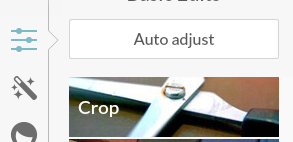
Click that and then choose Crop. A box will pop up on top of your design. Anything outside the box (greyed out) will get cropped away. It’s like trimming it away with a pair of scissors. Adjust the box to crop away about half of that outside edge. You can eyeball it. Now when you repeat that tile, the half border and the half border will meet up, making it the same thickness as all the other borders. (The pale grey shows the part I am cropping away.)
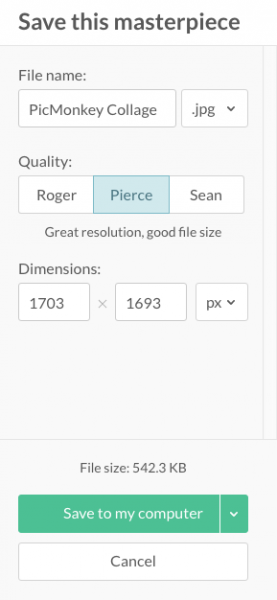 Save it.
Save it.
The last step is to save your design. The save button is located in the top menubar. When you click save it will ask you to name your file. Call it something you can remember.
The “quality” setting doesn’t matter here. Leave it at the middle setting. The number of pixels we calculated is actually the important part. We did that math.
Dimensions is the number of pixels in your design. Hold up! That doesn’t say 1800 pixels anymore!
Yes. That’s ok. That happened when we cropped away that extra stuff we didn’t need from the borders. We threw away some extra pixels. But we didn’t squash anything or change the resolution, so our design will still print just fine. It’s not a full 12 inches (1800 pixels) anymore, because we cropped it. And for this design that is just fine because we are just cutting out pieces from this fabric to make our bags.
Note: if you didn’t crop yours and skipped that optional step, it should still say 1800 pixels.
What happened? If it helps, imagine what would happen if you printed a random photo on a piece of paper from your regular desktop printer and then you took a pair of scissors and cut away the extra paper that was left around the edges. The photo didn’t change, you just got rid of the extra paper and now you have a smaller piece of paper, but the same photo. That’s what we did. Your design is exactly the same, we just got rid of some extra “paper”.
You can type in 1800 in this box and reset it if you need your repeat to be exactly 12 inches. (For example, if you were making a pillow cover and needed a 12 inch square exactly.) That totally works. PicMonkey will figure out how to rearrange those pixels when it saves it. Or you can leave it how it was cropped.
Now that you have saved it, you are ready to upload to Spoonflower. Go to www.spoonflower.com. Choose Create -> Fabric from the menu. Find your file on your harddrive, check the copyright acknowledgement box and click upload.
Take a look at the preview. Try changing the kind of repeat (to the right of the fabric preview.) Remember where I said Spoonflower would handle filling the whole fabric with your repeat tile; that’s what’s happening here. You are telling it how to arrange those tiles when it fills it in. You have several choices.
Change the amount of fabric you are previewing under #2 Choose a Size & Amount. I am looking at a preview here of a yard of fabric in a half-drop style repeat.
That’s it!
Your fabric is ready to order. For a zipper bag lining, I would pick the basic cotton, kona or sateen. Although if you are a little adventurous when sewing, the satin is really awesome (although slippery to sew with).
Have a fabric design project you want to figure out? Need a little help? Drop me a line at beckarahn[at]gmail.com and I might write another “Suggestion Box Tutorial”.


